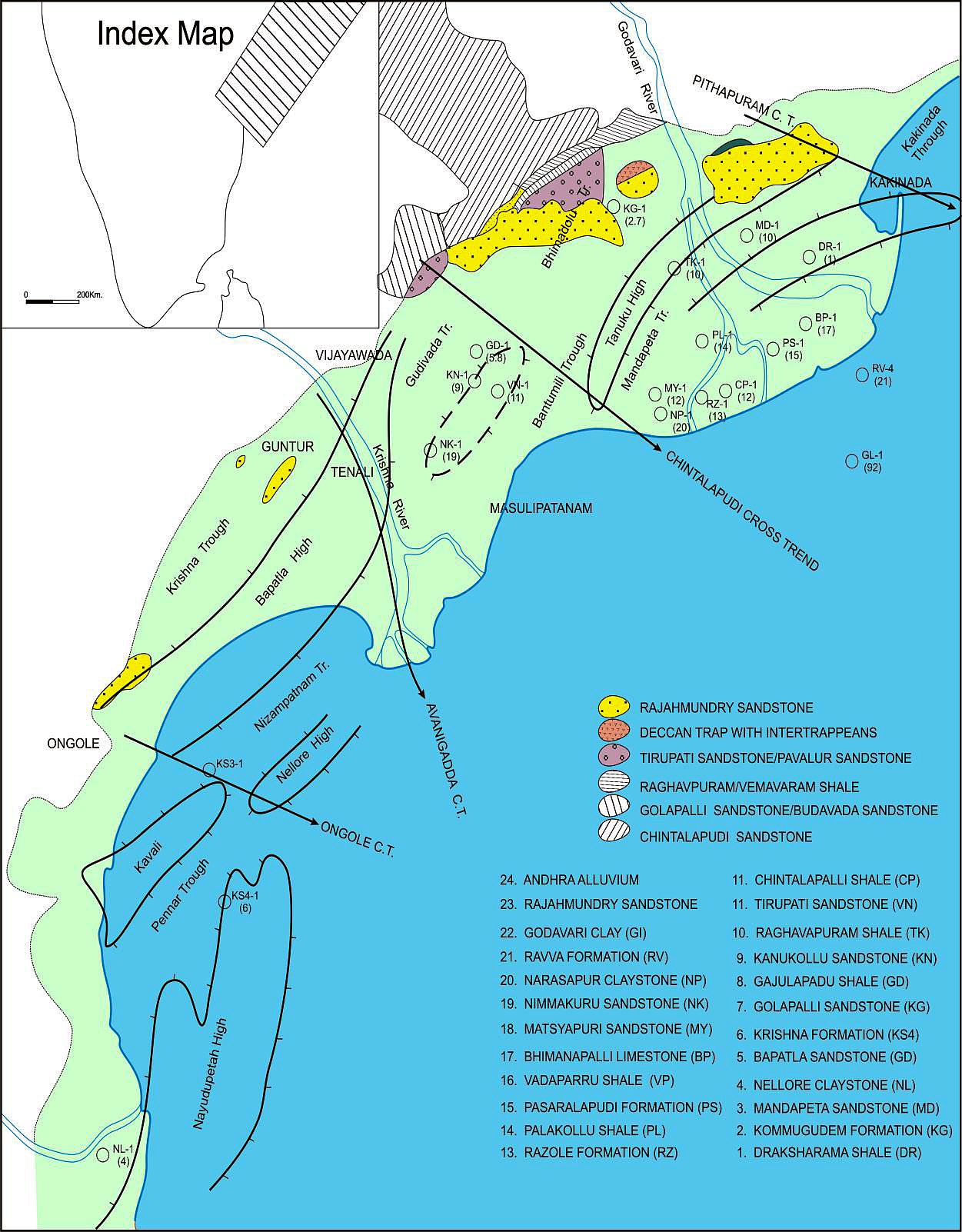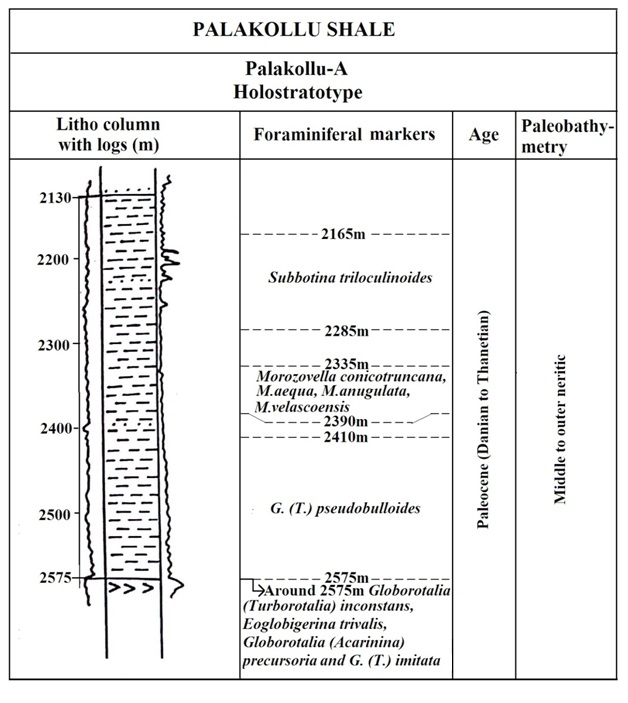Palakollu Fm
Type Locality and Naming
BASINAL: Named after Palakollu Town. The type section is in the well Palakollu-A (depth interval: 2130-2575 m). The hypostratotype is in the well Razole-A (depth interval: 3365-2550 m). It was named after the town Palakollu by ONGC team steered by Venkatarengan et al. (1993) adopted and issued as Document-VII by KDMIPE, ONGC, Dehradun (1993). [Original Publication: Rao, G.N. (1990) Subsurface stratigraphic nomenclature of Krishna-Godavari Basin, ONGC, unpublished report.]. Reference well: Well Razole – 1, Interval 3365-2550 m and thickness is 815 m.
Synonyms: Palakollu Shale
[Figure: Generalized Late Cretaceous-Cenozoic lithostratigraphy transect, Krishna-Godavari Basin. From Keller et al., 2011, Jour. Geol. Soc. India, 78:399-428, their Fig. 2]
[Figure: Map showing the locations of designated holostratotype section for the formation in the KG Basin (After ONGC, Pandey and Dave, 1998) in Raju et al., 2021, ONGC Bulletin, Special Issue, Vol. 56, No. 2]
Lithology and Thickness
Siltstone. This lithologic unit consists of dark grey, fissile shales with occasional silt bands. Siltstones are grey to dark grey, hard, compact and micaceous. It has a thickness varying from 445-815 m.
[Figure 1: Figure showing Lithocolumn, foraminiferal markers, age and paleobathymetry of the type section of Palakollu Fm, (modified after Venkatarengan et al., 1993)]
Relationships and Distribution
Lower contact
Unconformable with the Razole Fm.
Upper contact
Conformable with the Pasarlapudi Fm.
Regional extent
It is extensively developed in parts of Krishna-Godavari Basin.
GeoJSON
Fossils
Eoglobigerina trivialis, Globorotalia inconstans, G. precursoria, G.imitata, Morozovella angulata, M. aequa, M. conicotruncata, M. velascoensis and Subbotina triloculinoides.
Age
Depositional setting
Middle to Outer neritic.
Additional Information


